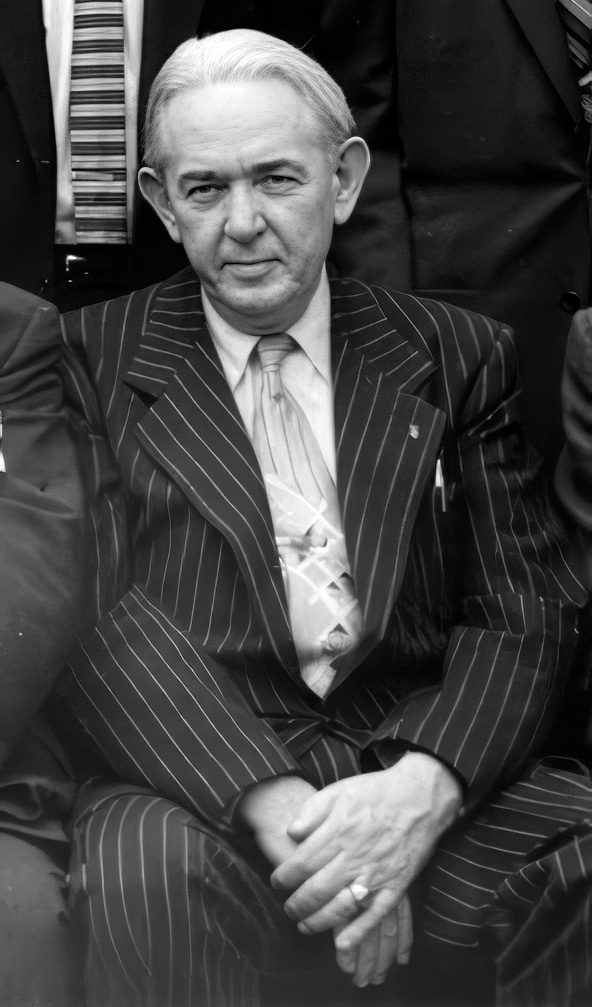RESOURCES
PEOPLE
James Lindsay Almond Jr.
1898-1986
James Lindsay Almond Jr. was a Virginia politician whose career was deeply defined by his role in the state’s Massive Resistance to school desegregation. Born in Charlottesville on June 15, 1898, Almond showed early interest in politics and oratory. By age sixteen, he was campaigning for local Democratic candidates, eventually drawing the attention of U.S. Senator Harry F. Byrd Sr., the powerful leader of Virginia’s conservative political machine.
Almond graduated from Virginia Polytechnic Institute and earned his law degree from the University of Virginia in 1923. He briefly worked in private practice in Roanoke before becoming assistant commonwealth’s attorney. His political loyalty to the Byrd Organization was rewarded in 1933 with a judgeship on the Hustings Court of Roanoke, where he was known for fighting election fraud, illegal liquor sales, and—even somewhat unusually for a white southern judge of the time—the unequal treatment of Black defendants by juries.
Almond was elected to Congress in 1946, filling a vacancy in Virginia’s sixth district. During his tenure, he supported major legislation like the Marshall Plan and the Taft-Hartley Act. In 1948, following the death of Attorney General Harvey Black Apperson, Almond was appointed to the role at Byrd’s urging.
As Attorney General, Almond was at the forefront of Virginia’s legal resistance to desegregation. He argued the state’s case in Davis v. County School Board of Prince Edward County, which became one of the five cases consolidated into Brown v. Board of Education (1954). Following the Supreme Court’s ruling declaring school segregation unconstitutional, Almond helped craft and defend the legal framework for what became known as Massive Resistance—a strategy to block integration using state laws, including school closures.
In 1957 Almond was elected governor on a segregationist platform, and continued the policies of his predecessor Thomas B. Stanley. In September 1958, he ordered the closure of public schools in Charlottesville, Front Royal, and Norfolk rather than allow them to integrate but on January 19, 1959, both the Virginia Supreme Court of Appeals and a federal court struck down the school-closing laws as unconstitutional. Almond initially responded with a fiery speech condemning the rulings and pledging defiance. Yet within a week, he reversed course, recognizing the legal futility of continued Massive Resistance.
Almond’s decision to permit limited desegregation, though still largely symbolic and superficial—an approach historian Robert A. Pratt would later call “passive resistance”—marked a significant political break from the Byrd Organization. His reversal earned him the enmity of Senator Byrd and many segregationist allies but ultimately helped bring Virginia’s official policy of Massive Resistance to an end.
Almond left the governor’s office in 1962 and was appointed to the U.S. Court of Customs and Patent Appeals in 1963, where he served until his death on April 14, 1986. His legacy is complex: he was both a key enforcer of segregation and, reluctantly, a participant in its dismantling. His career illustrates the deep entrenchment of Jim Crow ideology in mid-20th-century Virginia politics and the slow, often grudging evolution toward compliance with federal civil rights law.
